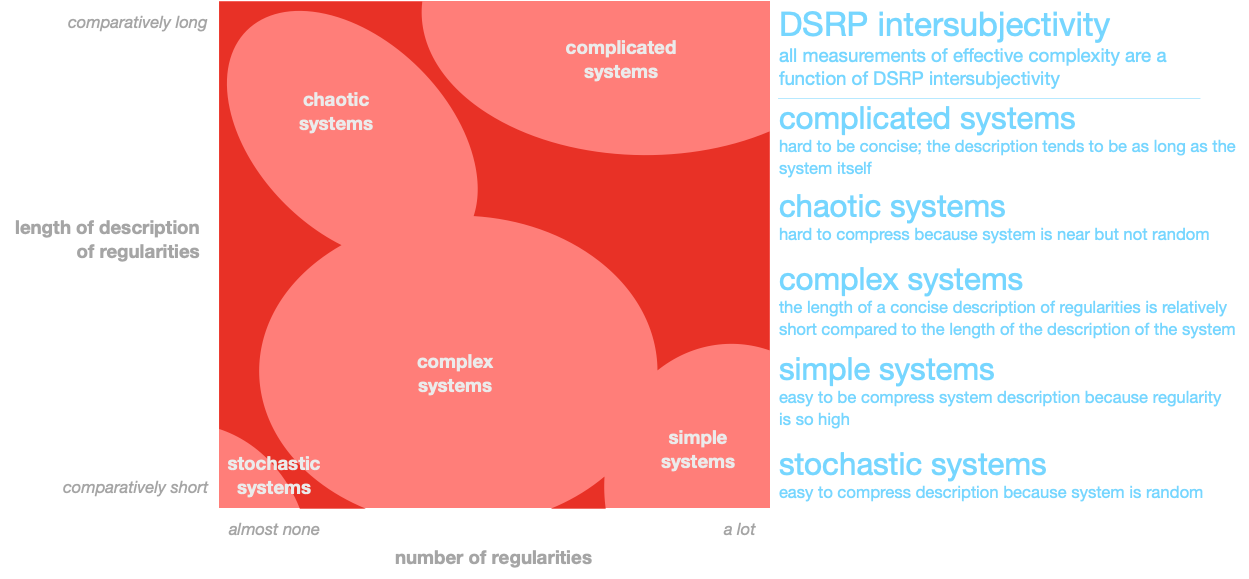noun
effective complexity (EC) is the length of a concise description of a set of regularities (found by mutual information (MI) in a system; EC assists in the differentiation of the terms complex, simple, complicated, chaos, and stochastic.
DSRP and VMCL are simple rules that underlie the complex adaptive systems (CAS) of thinking and organizations, respectively.
It turns out that while it is true that:
- simple systems are simple,
- complicated systems are complicated,
- complex systems are complex,
- chaotic systems are chaotic, and
- stochastic (random) systems are stochastic (random)
It is also true that there is a deep and surprising relationship between complex adaptive systems (CAS) (such as complex cognition or "systems thinking" and organizations) and simple rules. This means, somewhat paradoxically, that:
- complex systems are also simple
Any determination of "complexity" is DSRP-intersubjective. However, the following images provide a good guide for how these terms are distinguished.

Explained another way:

Another way of illustrating the above is as follows:

Or in map form:
See also:
- What is Complexity? by Murray Gell-Mann
- Effective Complexity by Murray Gell-Mann
Also try not to see:
The following items are often mistaken for adequate differentiations of complexity and associated terms (chaotic, simple, complicated, etc.) but they were designed for very different purposes (e.g., "to help managers identify how they perceive situations and make sense of their own and other people's behaviour."). While these frameworks are no doubt popular, they do not constitute a scientific understanding of complexity.


